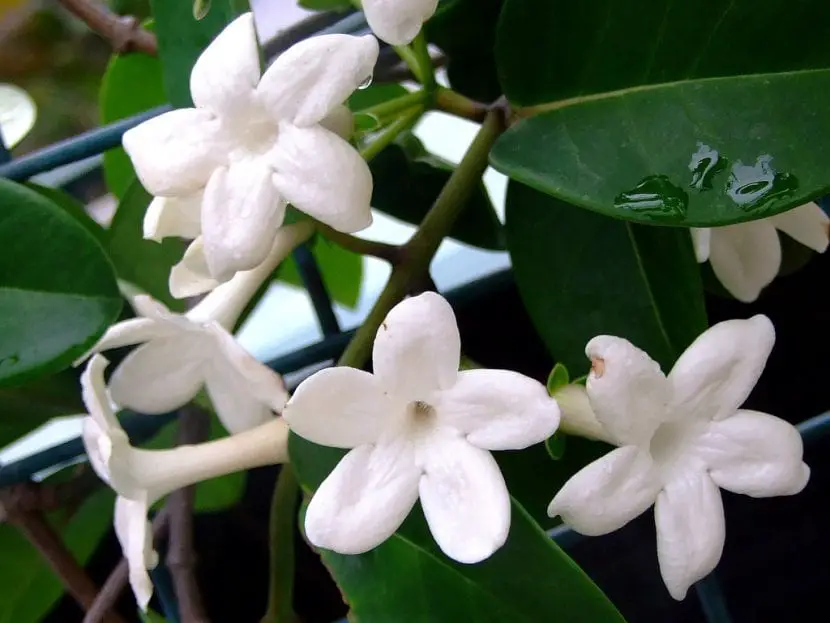
If you want to decorate your home with a climbing plant that has very decorative flowers, I can only recommend the one that is one of the most interesting. It is known by many common names, including Stephanotis and Jasmine from Madagascar.
It is a beautiful plant that produces small but very pretty white flowerswhich also give off a very pleasant aroma. Do you want to know more about her?
Characteristics of Estefanotis

The Estefanotis, also known as Estefanota or Estefanote and by its scientific name Stephanotis floribundais an evergreen climbing plant (remains evergreen) native to Madagascar. It belongs to the botanical family Asclepiadaceae and is characterized by having glossy, opposite, dark green or variegate leathery leaves. Its main attraction is its flowerswhich are arranged in small bouquets. These they are white, and their budding is in spring.
It is usually kept as an indoor plant since it is a plant very sensitive to cold. Even so, if you live in an area where frost does not occur, you can have it outside. But let’s see it in more detail:
How do you take care of yourself?

If you want to have one or more specimens, then we will tell you how you should take care of it / s:
- Location: indoors in a very bright room without drafts. Outside it can be if there are no frosts, in semi-shade.
- Substratum: it must have good drainage. It is advisable to mix universal culture substrate with perlite, and put as a first layer volcanic clay or arlite.
- Irrigation: frequent, especially in summer. During the warmer months of the year you have to water 3-4 times a week, while the rest of the year 2-3. Use water without lime, and remember that if you have a plate under it, you have to remove the excess water 5-10 minutes after watering.
- Subscriber: in spring and summer it must be paid, either with a universal fertilizer or with liquid organic fertilizers, such as guano. The instructions specified on the packaging must be followed.
- Pruning– Overgrown stems can be trimmed in early spring.
- Multiplication: by seeds in spring. Direct sowing in seedbed with vermiculite.
- Transplant: in spring, every two years.
- Rusticity: it does not support cold or frost. If the temperature drops below 10ºC it suffers damage.
What did you think of this plant?
